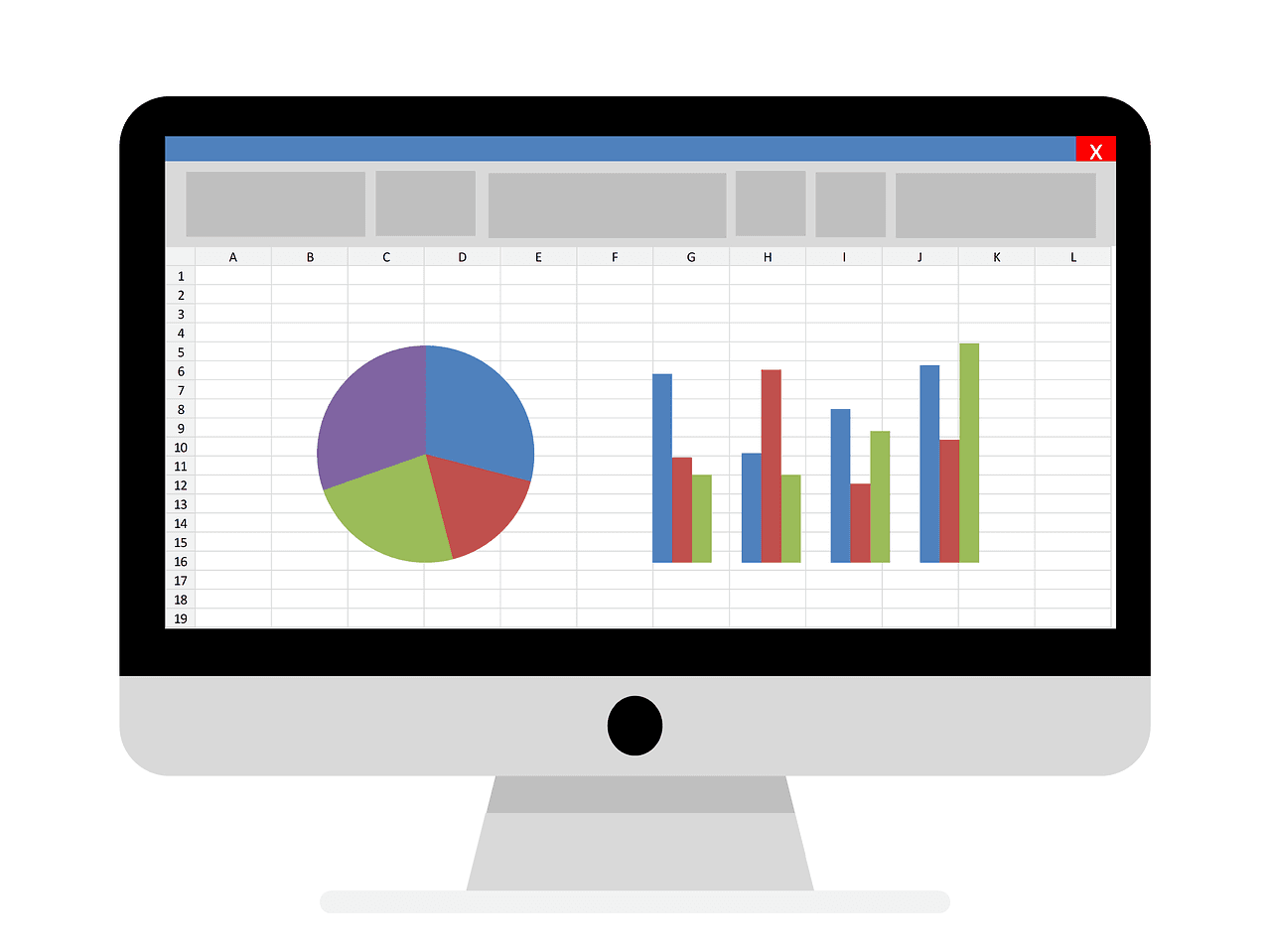- 1. How crucial is a strong online presence for enterprises?
- 2. Why is it important to rank on the first page of search results?
- 3. What is the click-through rate (CTR) for the first organic search result on Google?
- 4. How effective are SEO leads compared to outbound leads?
- 5. What is the top inbound marketing priority for marketers?
- 6. How does SEO compare to PPC in terms of effectiveness?
- 7. How important is SEO to enterprise marketing strategies?
- 8. How does blogging impact a website's indexed pages?
- 9. How does blogging affect backlink acquisition?
- 10. How long is the average first-page result on Google?
- 11. How significant is voice search expected to be by 2024?
- 12. How important is local search for mobile users?
- 13. How quickly do local mobile searches lead to purchases?
- 14. How do mobile searches for local businesses impact user actions?
- 15. How many factors does Google consider in ranking websites?
- 16. How does mobile-friendliness impact local business search results?
- 17. How does page load time affect bounce rates?
- 18. How quickly do mobile searches result in user action?
- 19. How can updating old blog posts impact organic traffic?
- 20. How important is local information in Google searches?
- 21. How does local search impact store visits?
- 22. How many searchers pick businesses on the first page of local search results?
- 23. What is the click-through rate (CTR) for websites that rank first in search results?
- 24. How many pieces of content do consumers view before talking to a salesperson?
- 25. How likely is visual content to be shared on social media?
- 26. How do senior marketing executives view visual assets?
- 27. How significant is organic search traffic for websites?
- 28. How does the buy online, pick up in-store (BOPIS) trend impact global shoppers?
- 29. How many web pages get no organic search traffic from Google?
- 30. How do strong backlink profiles impact search engine rankings?
- We got all the latest Marketing Stats here:
In the digital age, having a strong online presence is crucial for businesses of all sizes, but it is especially important for large enterprises. Enterprise SEO (Search Engine Optimization) involves optimizing a large-scale website with potentially thousands of pages to improve its visibility in search engine results. The goal is to drive organic traffic, increase brand awareness, and ultimately boost sales and revenue.
This article dives into vital statistics that highlight the importance of SEO for enterprises. These statistics provide a data-driven foundation for understanding how to leverage SEO to achieve large-scale success. Let’s explore the key insights that can guide your enterprise SEO strategy.
1. How crucial is a strong online presence for enterprises?

A strong online presence is essential, as 93% of online experiences begin with a search engine. This statistic underscores the importance of being visible in search engine results.
When users start their online journey with a search engine, it means your potential customers are likely doing the same. Ensuring that your enterprise website ranks highly in search results can significantly influence your website traffic and business success.
Being visible in search engine results not only drives traffic but also builds credibility. Users often perceive top-ranking websites as more trustworthy and authoritative. This perception can enhance brand reputation and lead to higher engagement and conversion rates.
2. Why is it important to rank on the first page of search results?
Ranking on the first page is critical because 75% of users never scroll past the first page of search results. This means that if your website is not listed on the first page, it is likely missing out on a significant amount of potential traffic. Most users find what they are looking for on the first page and do not bother checking subsequent pages.
To achieve first-page rankings, enterprises need to focus on SEO best practices, such as optimizing for relevant keywords, creating high-quality content, and building a strong backlink profile. This visibility can drive more organic traffic and increase the likelihood of attracting potential customers.
3. What is the click-through rate (CTR) for the first organic search result on Google?
The first organic search result on Google gets 28.5% of clicks. This high click-through rate (CTR) highlights the importance of securing the top position in search results. The first result attracts a significant portion of user clicks, leading to more traffic and potential conversions.
To achieve this top spot, enterprises must optimize their content, ensure fast page load times, and provide a great user experience. Focusing on these factors can help improve rankings and capture the majority of clicks from search engine users.
4. How effective are SEO leads compared to outbound leads?
SEO leads have a 14.6% close rate, compared to 1.7% for outbound leads. This statistic shows that SEO is not only effective in driving traffic but also in generating high-quality leads. Users who find your website through organic search are often actively looking for information or solutions, making them more likely to convert into customers.
Investing in SEO can yield better results compared to traditional outbound marketing methods. By attracting users who are already interested in your products or services, SEO can improve conversion rates and drive business growth.
5. What is the top inbound marketing priority for marketers?
Improving SEO and growing their organic presence is the top inbound marketing priority for 61% of marketers. This focus reflects the importance of organic search traffic in driving long-term growth. SEO is a sustainable strategy that can deliver consistent results over time.
Marketers prioritize SEO because it helps build a strong foundation for online visibility. By optimizing their websites, creating valuable content, and building backlinks, they can enhance their search engine rankings and attract more organic traffic. This approach not only drives immediate results but also supports long-term business objectives.
6. How does SEO compare to PPC in terms of effectiveness?
SEO is seen as more effective than PPC by 70% of marketers. While pay-per-click (PPC) advertising can drive quick results, SEO offers sustainable growth and better long-term returns. Organic search results tend to be more trusted by users compared to paid ads, leading to higher engagement and conversion rates.
Enterprises should balance their digital marketing strategies by investing in both SEO and PPC. While PPC can provide immediate visibility, SEO builds a strong foundation for lasting success. By focusing on both strategies, businesses can achieve comprehensive online visibility and reach their target audience effectively.
7. How important is SEO to enterprise marketing strategies?
SEO is considered an important part of their marketing strategy by 86% of enterprises. This statistic underscores the widespread recognition of SEO’s value in driving business success. For large-scale enterprises, SEO helps in managing vast amounts of content, optimizing site architecture, and ensuring that all pages are accessible and indexed by search engines.
Effective enterprise SEO requires a comprehensive approach, including technical SEO, content optimization, and link building. By integrating SEO into their marketing strategies, enterprises can improve their search engine rankings, attract more organic traffic, and enhance their overall online presence.
8. How does blogging impact a website’s indexed pages?
Companies that blog have 434% more indexed pages than those that don’t. This significant increase in indexed pages means that blogging can greatly enhance a website’s visibility in search engine results. Each blog post represents an additional opportunity to rank for relevant keywords and attract organic traffic.
Blogging also helps in keeping the website fresh and updated, which search engines favor. By consistently publishing high-quality blog content, enterprises can improve their SEO performance, drive more traffic, and engage their audience with valuable information.
9. How does blogging affect backlink acquisition?
Businesses that blog get 97% more links to their websites. Backlinks are a crucial factor in SEO, as they signal to search engines that your site is a credible and authoritative source. Blogging provides opportunities to create link-worthy content that other websites may reference and link to.
By producing informative and engaging blog posts, enterprises can attract natural backlinks from other reputable sites. This not only improves search engine rankings but also drives referral traffic and enhances the site’s authority and credibility.
10. How long is the average first-page result on Google?

The average first-page result on Google contains 1,447 words. This indicates that long-form content tends to perform better in search engine rankings. In-depth articles provide comprehensive information, which is favored by both users and search engines.
Enterprises should focus on creating detailed and informative content that thoroughly addresses the needs and questions of their audience. By providing value through long-form content, businesses can improve their chances of ranking on the first page of search results and attracting more organic traffic.
11. How significant is voice search expected to be by 2024?
By 2024, 50% of all searches are expected to be voice searches. This shift towards voice search highlights the need for enterprises to optimize their content for voice queries.
Voice search users typically use more conversational language and longer phrases, so incorporating natural language and question-based keywords into your SEO strategy is essential.
To capitalize on the rise of voice search, enterprises should focus on creating content that answers common questions and provides clear, concise answers. This approach can help improve visibility in voice search results and attract users who prefer using voice commands for their searches.
12. How important is local search for mobile users?
Local search is crucial, with 40% of mobile users searching for local businesses. This statistic underscores the importance of local SEO for enterprises that operate in specific geographic areas. Mobile users often search for nearby services, making it essential for businesses to optimize their online presence for local search queries.
To enhance local SEO, enterprises should claim and optimize their Google My Business profiles, ensure their NAP (Name, Address, Phone Number) information is consistent across all platforms, and gather positive reviews from satisfied customers. These efforts can improve local search rankings and attract more mobile users to your business.
13. How quickly do local mobile searches lead to purchases?
A significant 18% of local mobile searches lead to a purchase within one day. This statistic highlights the immediate impact of local search on consumer behavior. When users search for local businesses on their mobile devices, they are often ready to make a purchase quickly.
Enterprises should ensure that their websites and online listings provide all the necessary information to facilitate quick decision-making. This includes clear contact details, business hours, and user-friendly navigation.
Additionally, optimizing for mobile devices can enhance the user experience and increase the likelihood of conversions from local searches.
14. How do mobile searches for local businesses impact user actions?
88% of searches for local businesses on a mobile device either call or visit the business within 24 hours. This high conversion rate underscores the importance of optimizing for local search to drive immediate user actions. Mobile users looking for local businesses are highly motivated and likely to take action quickly.
To capture this opportunity, enterprises should ensure their local listings are accurate and up-to-date. Providing easy ways for users to contact the business, such as click-to-call buttons and directions, can further increase the chances of converting local searchers into customers.
15. How many factors does Google consider in ranking websites?
Google’s algorithms consider over 200 factors in ranking websites. This complexity underscores the need for a comprehensive SEO strategy that addresses various aspects of optimization. From on-page elements like keywords and content quality to off-page factors like backlinks and user signals, all these elements contribute to a website’s ranking.
Enterprises should focus on a holistic SEO approach, including technical SEO, high-quality content creation, and link-building efforts. By addressing the multitude of ranking factors, businesses can improve their chances of achieving higher rankings and driving more organic traffic.

Related: Check out our free tools:

16. How does mobile-friendliness impact local business search results?
61% of mobile searchers are more likely to contact a local business if they have a mobile-friendly site. This statistic highlights the importance of ensuring that your website is optimized for mobile devices. A mobile-friendly site provides a better user experience, which can lead to higher engagement and conversion rates.
To optimize for mobile, enterprises should use responsive design, ensure fast load times, and simplify navigation. Providing a seamless experience for mobile users can improve your local search rankings and attract more potential customers.
17. How does page load time affect bounce rates?
Pages that load within 2 seconds have an average bounce rate of 9%, while pages that load in 5 seconds have a bounce rate of 38%. This significant difference highlights the impact of page load time on user behavior. Slow-loading pages can frustrate users and lead to higher bounce rates, which negatively affect SEO.
Enterprises should prioritize optimizing page load times by compressing images, leveraging browser caching, and minimizing JavaScript. Fast-loading pages not only enhance the user experience but also improve search engine rankings and reduce bounce rates.
18. How quickly do mobile searches result in user action?
70% of mobile searches result in action being taken within an hour. This statistic underscores the immediacy of mobile search behavior. Users conducting mobile searches often have high intent and are ready to act quickly, making it crucial for enterprises to provide timely and relevant information.
To capture this intent, businesses should ensure their mobile site is optimized for quick access to information, easy navigation, and fast load times. Providing a seamless mobile experience can increase the likelihood of converting mobile searchers into customers.
19. How can updating old blog posts impact organic traffic?
Updating and republishing old blog posts with new content and images can increase organic traffic by as much as 106%. This strategy, known as content refresh, helps keep your content relevant and valuable to readers. Search engines favor fresh content, and updating old posts can improve their rankings.
Enterprises should regularly audit their content to identify opportunities for updates. Adding new information, optimizing for current keywords, and enhancing the visual appeal of old posts can drive more organic traffic and improve user engagement.
20. How important is local information in Google searches?

46% of all Google searches are seeking local information. This statistic emphasizes the importance of local SEO for businesses targeting specific geographic areas. Users frequently search for local businesses, services, and products, making it essential for enterprises to optimize for local search queries.
To improve local search visibility, businesses should focus on local keyword optimization, managing online reviews, and ensuring accurate local listings. Engaging with the local community through events and partnerships can also enhance local search performance and attract more customers.
21. How does local search impact store visits?
72% of consumers who did a local search visited a store within five miles. This statistic highlights the significant impact of local search on driving foot traffic to physical locations. When users search for local businesses, they often prefer those that are conveniently located nearby.
To capitalize on this behavior, enterprises should ensure that their business information is accurate and easily accessible in local search results. Including details like address, hours of operation, and directions can make it easier for potential customers to visit your store.
22. How many searchers pick businesses on the first page of local search results?
92% of searchers will pick businesses on the first page of local search results. This high percentage underscores the importance of ranking well in local search. Being listed on the first page increases visibility and credibility, making it more likely that users will choose your business.
To achieve first-page rankings, enterprises should focus on local SEO strategies such as optimizing Google My Business profiles, gathering positive reviews, and ensuring consistent NAP (Name, Address, Phone Number) information across all platforms.
Engaging with local customers through social media and community events can also enhance your local search presence.
23. What is the click-through rate (CTR) for websites that rank first in search results?
The click-through rate (CTR) for a website that ranks first in the search results is 31.7%. This high CTR indicates the significant advantage of being the top-ranked result. Users are more likely to click on the first result they see, driving more traffic to the top-ranking website.
Achieving the top spot requires a comprehensive SEO strategy that includes keyword optimization, high-quality content, and strong backlinks. By continually optimizing these elements, enterprises can improve their search rankings and capture a larger share of user clicks.
24. How many pieces of content do consumers view before talking to a salesperson?
47% of consumers view 3-5 pieces of content created by a company before talking to a salesperson. This statistic highlights the importance of providing valuable content throughout the buyer’s journey. Consumers often conduct extensive research before making a purchase decision, and having informative content can influence their choice.
Enterprises should create a variety of content, including blog posts, case studies, whitepapers, and videos, to address different stages of the buyer’s journey. Providing educational and engaging content can build trust and encourage potential customers to reach out to your sales team.
25. How likely is visual content to be shared on social media?
Visual content is 40 times more likely to be shared on social media. This statistic underscores the power of visuals in driving engagement and reach. Images, videos, infographics, and other visual assets capture attention and encourage users to share them with their networks.
To maximize the impact of visual content, enterprises should focus on creating high-quality, visually appealing assets that align with their brand. Sharing visual content on social media can enhance visibility, increase engagement, and attract more followers.
26. How do senior marketing executives view visual assets?

65% of senior marketing executives believe visual assets (photos, videos, illustrations, infographics) are core to how their brand story is communicated.
This perspective highlights the importance of visual content in building and maintaining a strong brand identity. Visuals help convey complex information quickly and effectively, making them essential for modern marketing strategies.
Enterprises should invest in creating high-quality visual content that reflects their brand values and resonates with their audience. Consistency in visual style and messaging can strengthen brand recognition and enhance overall marketing efforts.
27. How significant is organic search traffic for websites?
Organic search is responsible for 53% of all website traffic. This statistic highlights the critical role of organic search in driving visitors to websites. Relying heavily on organic search traffic underscores the importance of SEO in attracting and retaining users.
Enterprises should focus on optimizing their websites for search engines by using relevant keywords, creating valuable content, and building a strong backlink profile. By improving their organic search performance, businesses can attract more visitors and drive long-term growth.
28. How does the buy online, pick up in-store (BOPIS) trend impact global shoppers?
45% of global shoppers buy online and then pick up in-store, and 48% of these shoppers say they are likely to buy online and pick up in-store for future purchases. This trend, known as BOPIS, combines the convenience of online shopping with the immediacy of in-store pickup, offering a seamless shopping experience.
Enterprises should optimize their online and in-store operations to accommodate this trend. Providing clear information about BOPIS options, ensuring inventory accuracy, and streamlining the pickup process can enhance the customer experience and drive sales.
29. How many web pages get no organic search traffic from Google?
A staggering 90.63% of web pages get no organic search traffic from Google. This statistic highlights the challenge of standing out in a crowded online environment. Many web pages fail to attract traffic due to poor optimization, lack of quality content, or inadequate backlinks.
To overcome this challenge, enterprises should focus on creating high-quality, optimized content that addresses user needs and interests. Building a strong backlink profile and ensuring technical SEO best practices are followed can improve visibility and drive organic traffic.
30. How do strong backlink profiles impact search engine rankings?
Websites with a strong backlink profile tend to rank higher in search engine results. Backlinks from reputable and authoritative sites signal to search engines that your content is valuable and trustworthy. This can significantly improve your search engine rankings and drive more organic traffic.
Enterprises should focus on building high-quality backlinks through strategies such as guest posting, creating link-worthy content, and establishing partnerships with other reputable sites. A strong backlink profile can enhance your SEO efforts and contribute to long-term success.
We got all the latest Marketing Stats here:
READ NEXT:
- Impact of Online Reviews and Rating Systems on SEO
- Core Web Vitals: Why Page Speed Matters in Financial SEO
- The Importance of Technical SEO in Financial Services
- SEO tips Recommended for Tax Preparation Website Clients!
- Key Considerations When Choosing a Marketing Automation Software in 2023






















Comments are closed.